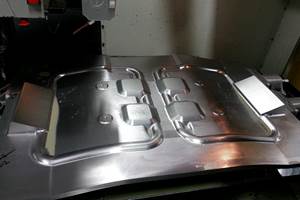Avoid Paying Estate Taxes
This column is about our book, "Tax Secrets of the Wealthy," that shows you how to finesse the estate tax. Jot down what you think you might be worth on the day you go to the big business in the sky.
Share





This column is about our book, "Tax Secrets of the Wealthy," that shows you how to finesse the estate tax. Jot down what you think you might be worth on the day you go to the big business in the sky. Chances are, the IRS will get more of your wealth than your family.
The book provides an organized, tax-saving, wealth-building system that delivers your wealth intact to your family. Yet, you keep absolute control of every one of your assets—including your business—for as long as you live. How do you accomplish this seemingly impossible feat? Well, let's start with the fact that there are only three ways to split up your wealth, dead or alive: give it to your family; give it to charity; or lose it to the IRS.
You should avoid losing it to the IRS. Your choices should revolve around selecting the right tax strategies, and then properly using the strategies in an easy, comprehensive plan. Let's look at three typical examples of couples who used our book as their guide to create their plans.
Example 1: Joe and Mary, from Ohio, are worth $2.5 million. They used three strategies. 1) They transferred their home to a qualified personal residence trust. This strategy allows them to live in their home for life, yet it is out of their estate. 2) They created an irrevocable life insurance trust (ILIT) to hold a second-to-die life insurance policy for $500,000, which will be paid to their kids tax free. 3) They created a family limited partnership (FLIP) to hold their $1.1 million in investment assets—mostly publicly traded stocks and income-producing real estate—to get a 35 percent discount for tax purposes on the value of the assets in the FLIP.
Results: They don't owe an estate tax, and their kids will end up with $3.0 million or more, all tax free.
Example 2: Jim and Mandy, from North Carolina, are worth $8 million. They used five strategies. 1) They bought an annuity for $1.5 million, cashed in municipal bonds. (This is called the "junk money concept.") They used the annual annuity payments to pay the premiums on a $3.5 million second-to-die policy. 2) Also, an ILIT owned the policy, keeping the $3.5 million out of their estate. 3) They transferred $2.1 million of investment assets to their FLIP. 4) Every year, Jim and Mandy will give $22,000 of FLIP units to each of their kids and grandkids. 5) Jim transferred his business to his two sons using an intentionally defective trust (IDT), a tax-free transaction.
Results: After both Jim and Mandy are gone, it is estimated that their family will receive $10 million (or more)—the net of a small estate tax bill.
Example 3: Jack and Millie, from Nebraska, are worth $40 million. They used six strategies, including: 1) a FLIP, 2) annual gifts to their kids and grandkids and 3) an IDT to transfer their business to their two business kids, a son and a daughter. 4) They funded a charitable lead trust (CLT) for $10 million. It is estimated that the charity will get about $8 million over a 12-year period, and then the kids will get about $12 million, all tax free. 5) A separate FLIP is used in combination with the CLT. 6) Jack had $3.6 million in a profit-sharing plan and IRAs. The plan created a subtrust to buy $14 million in life insurance (second-to-die). The entire $14 million will ultimately go to the family, estate tax free.
Results: About $42 million will go to their family after Jack and Millie are gone—the net of all taxes due.
The book explains 23 basic strategies and how to use the strategies to create the perfect plan for you and your family.This plan should completely eliminate the impact of the estate tax, while you keep control of all your assets for as long as you live.
For a copy of "Tax Secrets of the Wealthy" ($467; $337 if you send a copy of this article), send a request to: Book Division, Blackman Kallick Bartelstein, LLP, 10 South Riverside Plaza, Suite 900, Chicago, IL 60606.
Related Content
4 Tips for Staying Profitable in the Face of Change
After more than 40 years in business, this shop has learned how to adapt to stay profitable.
Read More4 Commonly Misapplied CNC Features
Misapplication of these important CNC features will result in wasted time, wasted or duplicated effort and/or wasted material.
Read More6 Variations That Kill Productivity
The act of qualifying CNC programs is largely related to eliminating variations, which can be a daunting task when you consider how many things can change from one time a job is run to the next.
Read MoreObscure CNC Features That Can Help (or Hurt) You
You cannot begin to take advantage of an available feature if you do not know it exists. Conversely, you will not know how to avoid CNC features that may be detrimental to your process.
Read MoreRead Next
Machine Shop MBA
Making Chips and 91ÊÓƵÍøÕ¾ÎÛ are teaming up for a new podcast series called Machine Shop MBA—designed to help manufacturers measure their success against the industry’s best. Through the lens of the Top Shops benchmarking program, the series explores the KPIs that set high-performing shops apart, from machine utilization and first-pass yield to employee engagement and revenue per employee.
Read MoreAMRs Are Moving Into Manufacturing: 4 Considerations for Implementation
AMRs can provide a flexible, easy-to-use automation platform so long as manufacturers choose a suitable task and prepare their facilities.
Read More

















